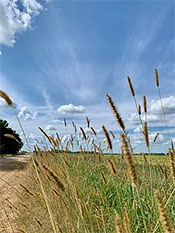6 Best Respiratory Supplements


The main limitation in the use of Boswellia is the poor absorbability of pure boswellia. In these new Boswellia extracts, the active ingredients are better absorbed in the intestines.


Elderberry is used for respiratory and resistance support. Elderberry also has diuretic properties.


In addition to many other beneficial properties, Sage also has a positive effect on the respiratory tract.


Echinacea purpurea and Echinacea angustifolia (Red sunshade) have been used since ancient times for their effects on respiratory and immune systems.


Stinging Nettle capsules help support fluid balance and have a beneficial effect on the respiratory system.


Ginger originates from Asia and has been used for centuries as a flavor enhancer. It has a long track record as a medicinal herb. Scientific studies have shown that ginger is beneficial for, among other things, the immune system and the respiratory tract.
Formulas for the respiratory system

- Formula for respiratory tract and immune system
- Contains purple coneflower (echinacea), indigo herb, downy birch, nasturtium and lesser nettle

- Formula for respiratory tract and immune system
- Contains large plantain, onion, lemon balm, anise and thyme

- Formula for respiratory tract and immune system
- Contains thyme, elderberry, blackcurrant and sponge gourd

- Formula for respiratory tract and immune system
- Contains sanicle, mountain arnica and goldenrod
Buy the best supplements for the respiratory tract here. Or read more below.
The respiratory tract: more than just the lungs
Think of the respiratory tract and you probably think of the lungs. Obviously, the lungs are an important part of the airways. But in addition to the lungs, the nasal, oral, and pharyngeal cavities as well as the larynx are also part of the respiratory tract.
These parts of the body belong to the conducting part of respiration. The part that brings gases from the external environment into the body.
The respiratory tract also consists of an exchange part, also called the respiratory part. This is where the inhaled air is exchanged with the bloodstream.
In the lungs lie the bronchi and alveoli. This is where the exchange takes place: with oxygen being delivered to the blood and then transported to the body cells throughout the body. At the same time, carbon dioxide (C02) is delivered from the blood to the alveoli to then be exhaled.
Hemoglobin
Hemoglobin is a protein with an iron atom in red blood cells with a high oxygen-binding capacity that ensures oxygen is transported through the body. Hemoglobin, in an oxygen-deficient environment, readily releases the bound oxygen by carbon dioxide. If the C02 level in the blood is too low, hemoglobin will not deliver oxygen to the tissues optimally.
Oxygen and carbon dioxide
 Just this balance between oxygen and carbon dioxide is important. If we exhale too much C02 through breathing too fast, our blood becomes too alkaline (basic). The body starts compensating for this by expelling the alkaline bicarbonate in the blood. Unfortunately, minerals are also lost in the process.
Just this balance between oxygen and carbon dioxide is important. If we exhale too much C02 through breathing too fast, our blood becomes too alkaline (basic). The body starts compensating for this by expelling the alkaline bicarbonate in the blood. Unfortunately, minerals are also lost in the process.
Acid-base balance/small margin
The normal acidity of the blood is between 7.35 and 7.45 pH, i.e., the blood is slightly alkaline (basic). Although only a small margin, it is vital. Large deviations have life-threatening consequences and our body is therefore constantly working to keep the pH within the mentioned values. The lungs, along with the kidneys, are the main regulatory system to maintain this acid-base balance in our body.
Autonomous process
Breathing is an automatic process, you don't have to think about it. It is regulated by the autonomic nervous system. If you are in a relaxed state then your breathing will slow down, when (in)tension the opposite happens. Through conscious breathing you can influence your state of being.
The respiratory tract is the connection between the inner and outer world. It is precisely your breathing that forms the connection. And if we lose the connection, you lose the connection with life, so to speak.
Written by: Liesbeth Thoen
Reviewed and edited by: Peter Smeets
Updated: November 28, 2022
